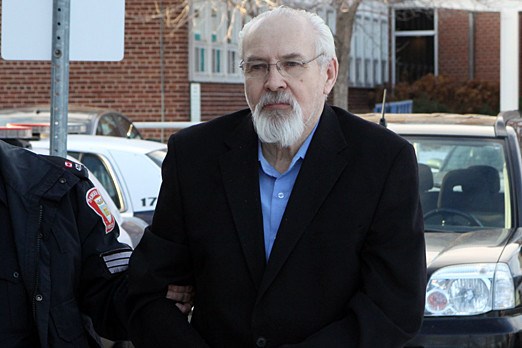An OPP officer testified Wednesday that he couldn’t find physical evidence connecting a murder suspect to the death of his common law partner.
The trial for Michael Kelly resumed Wednesday at the Superior Court of Justice in Thunder Bay. Kelly, 65, faces a first-degree murder charge in connection with the disappearance and death of 57-year-old Judie Thibault.
The jury heard from the Crown’s first witness, OPP forensic officer Sgt. Scott Hlady. Sgt. Hlady told the court that he looked at the carpet, cords and rope that were used to wrap up a body police found in a ditch near Wolf Lake in August 2004.
Despite all the tests, police were unable to find a forensic link connecting Kelly to the evidence found at the scene of the crime.
Hlady added that he compared the carpet found with the body to carpets of other areas in town that were of interest to police. Hlady testified that he also tested for soil samples on Thibault’s car to see if they matched the soil near where the body was found.
“I don’t feel the body would have gotten there in the ditch without someone bringing it there,” Hlady said.
“If someone would have rolled it, it would have been stopped by the first rows of trees. (Thibault) was in that carpet.”
Crown Attorney Dan Mitchell clarified that police couldn’t find evidence to link the murder to anyone, not just Kelly.
Kelly’s lawyer Gil Labine said there was no evidence to show how Thibault got into the ditch.
He told the court that Thibault’s body weighed about 180 pounds and that the she was found about 10 feet away from the road.
Labine said the 22-caliber bullet found in the back of Thibault’s head was the likely cause of death.
The court also heard from forensic anthropologist Dr. Scott Fairgrieve. A postmortem examination by Fairgrieve highlighted a number of injuries the victim sustained.
He explained that Thibault had a number of fractured ribs that were in several different stages of healing, but that she also had some fractures that weren’t healing at all.
He continued to explain to the court that she had canine teeth marks and a circular hole in the back of her head about eight millimeters wide – consistent with the size of a bullet wound.
“The nature of the hole indicates that this happened around the time of death,” Fairgrieve said.
The body of Thibault wasn’t discovered for about four years. Fairgrieve said the carpet probably helped to slow down the decomposition, but added that the insects still had access to the body from the openings at the top and bottom of the carpet.
“When we got to the scene we wanted to assess the situation,” he said.
“We assessed a carpet and what appeared to be a cable. There was opening and I saw skeletal remains. A body left in the wild unwrapped can (skeletonize) in a short time – about 15 days. Insects play a very large role in the decomposition process.”
The trial continues Thursday and is expected to take up to three weeks to complete.
